Enhancing productivity and creativity with flow state training
By Julian Lewis • February 16, 2023

Experts agreed that innovation provides successful businesses with a competitive advantage by providing a supply of fresh ideas and solutions that can drive growth and productivity. Creative thinking leads to the development of new products, services, and procedures that can help a company stand out from its competition and dominate in any industry.
However, many employers struggle to eliminate distractions for their employees and create an environment that allows their team to be fully engaged. Studies have shown that distractions can reduce employee engagement and lower motivation, leading to burnout and decreased job performance. Therefore, employers need to take proactive steps to prevent distractions and create an environment that fosters peak performance.
Flow state, sometimes known as the "zone," is a mental state in which people become completely immersed in their job and perform at their best. This mentality can lead to greater productivity and creativity, making it a valuable tool for anyone who desires to improve their staff's overall efficiency.
In this blog post, we will examine the concept of flow state and how it may be used to improve innovation and productivity within your company. We will cover all you need to know to get into this powerful state of mind, from understanding the causes of flow state to adopting flow state practices into your team's daily routine.
Join our Newsletter
Transform your career with our personal growth insights. Get one valuable tip right in your inbox every Saturday morning.
What is a flow state?
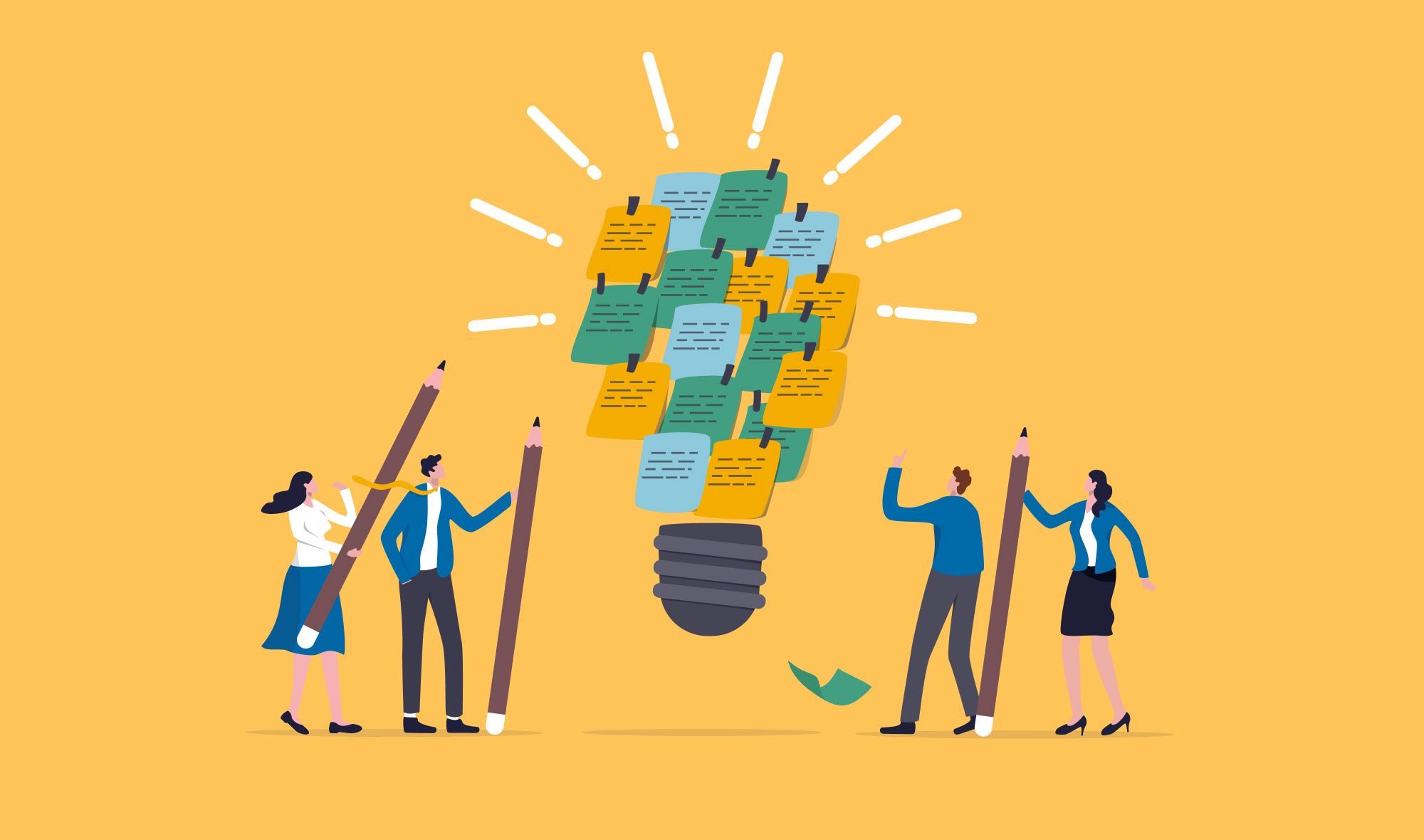
First introduced by Mihaly Csikszentmihalyi in the 1970s, flow state is a mental state characterized by complete absorption in the task at hand, increased focus, creativity, and productivity.
Csikszentmihalyi was a Hungarian-American psychologist and researcher, born on September 29, 1934, in Fiume, Italy (now Rijeka, Croatia). He is best known for his life work on the concept of "flow," a state of complete immersion in an activity that brings about a feeling of satisfaction, happiness, and overall well-being.
After immigrating to the United States in 1956, Csikszentmihalyi received his Ph.D. in psychology from the University of Chicago in 1965. He went on to teach at several universities, including Lake Forest College and the University of Chicago, before moving to Claremont Graduate University in California, where he served as a professor of psychology for many years.
Csikszentmihalyi is widely regarded as one of the leading experts in the field of positive psychology and has been recognized for his contributions to the study of human performance and well-being. He has published numerous books and articles on the topic of flow, including "Flow: The Psychology of Optimal Experience" (1990), which has been widely cited and has become a classic in the field.
As a pioneer in the study of positive psychology, his extensive research sought to understand the conditions that lead to human happiness and fulfillment. He introduced the concept of flow state as a key factor in experiencing holistic wellness and overall balance and satisfaction in life.
During a state of flow, individuals are fully engaged in their work, experiencing a sense of challenge and mastery, and a sense of time distortion. Many have described their experience of being in the "zone" as a period of intense focus where they were completely absorbed in an important task, which lead to improved performance, increased creativity, faster skill development, and countless other benefits.
Examples of flow in action
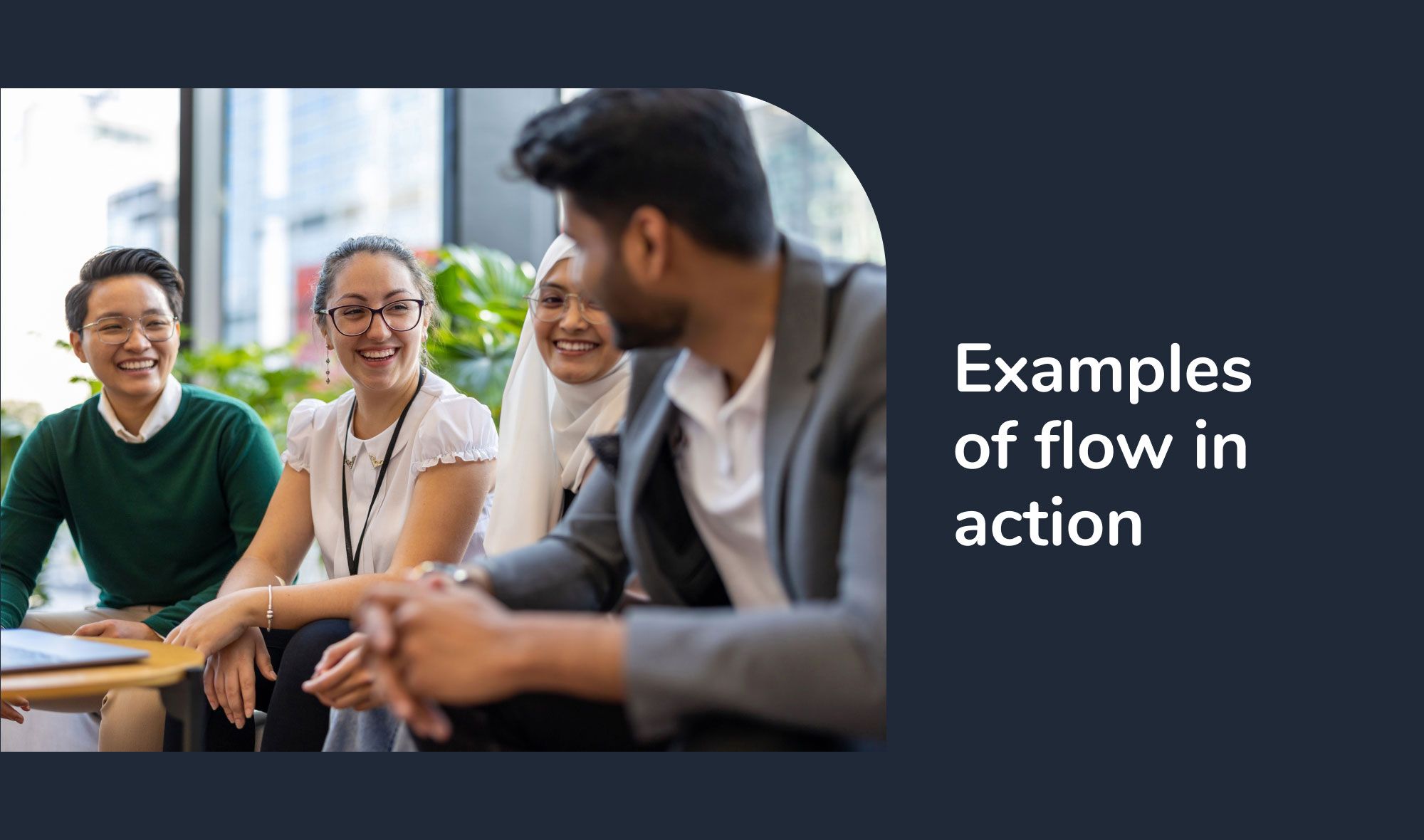
Several artists, singers, and celebrities have discussed the value of flow states and how learning to embrace the perks has influenced their creative process and success. Steve Jobs, Apple's late co-founder, was recognized for his pursuit of a flow state and his ability to enter this state to drive invention and creativity.
Jobs was noted for his fixation and attention to detail, and he frequently stressed the significance of being completely immersed in the task at hand. He believed that being in a flow state allowed people to lose themselves in their work and produce their finest work.
The great musician and writer Eric Clapton has also spoken freely about how flow state has influenced his work and allowed him to give some of his best performances. He recalls being able to play with greater comfort and precision while in a state of flow and claims that the creative process becomes natural.
Furthermore, Clapton has stated that being in a flow state allows him to connect with his audience on a deeper level and create truly transformative performances. Other popular and wildly talented musicians, such as Pharrell Williams, Lin-Manuel Miranda, and Paul McCartney, have shared similar sentiments about the power of flow states and how their skill level and performance have been deeply impacted when they achieve flow.
Understanding flow state in the workplace
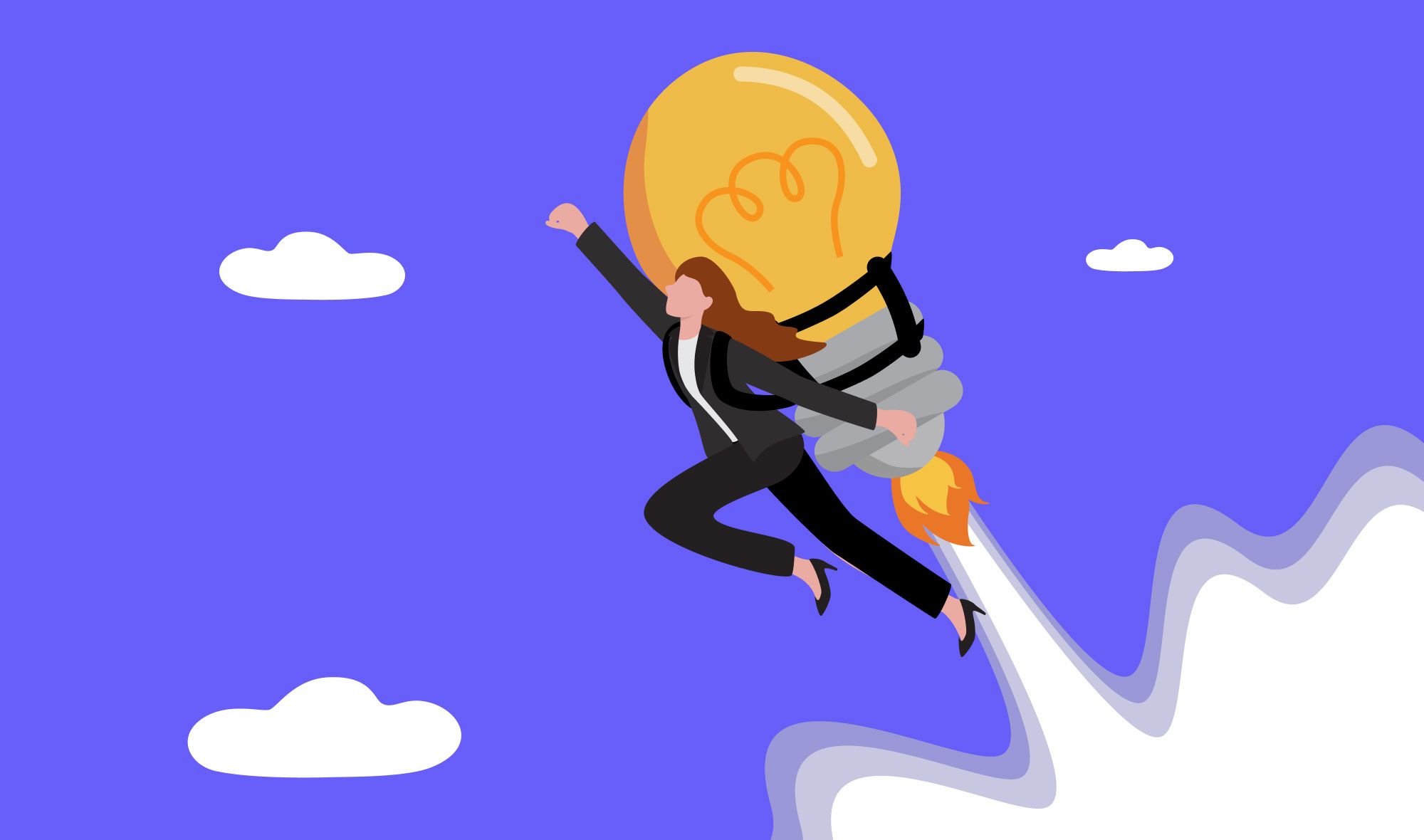
If you are looking to increase productivity, raise skill levels, creative activities, and overall job satisfaction for yourself and your team members, understanding what flow state in the workplace is crucial. Read on to learn what achieving flow state looks like and how to identify the flow triggers.
Join our Newsletter
Transform your career with our personal growth insights. Get one valuable tip right in your inbox every Saturday morning.
Characteristics of flow state

Most flow state training courses focus on four core components of flow experiences: complete focus, loss of time, effortless performance, and increased enjoyment. In order to reach an optimal state of flow, a combination of all four characteristics is a must.
Let's dive into the traits of flow theory a little further:
Complete focus:
Individuals in a flow state experience complete focus on the task at hand. This state of focus is often characterized by intense concentration and immersion in the task. When in flow, individuals are not distracted by external stimuli or internal thoughts, and their focus is solely on what is in front of them.
This complete concentration can lead to higher performance, as individuals are able to concentrate fully on the task, leading to increased efficiency and accuracy. A flow state can also lead to higher motivation and engagement, as individuals are more likely to enjoy the task when they are fully focused on it.
Loss of self-consciousness:
Moreover, complete focus can lead to a heightened awareness of time, where individuals are able to perform tasks in less time. Under optimal conditions, individuals are able to lose track of time and are not aware of the passage of time. and self-consciousness disappears in a flow state as they become fully absorbed in the task.
Additionally, self-consciousness tends to disappear as individuals become totally absorbed in the task. They are not concerned with self-criticism or evaluation, and their focus is solely on the task. This lack of self-consciousness allows individuals to perform at their best, as they are not inhibited by self-doubt or fear of failure.
Effortless performance:
When someone is freed from distractions, self-esteem issues, and their inner critic, tasks are often performed with more ease and efficiency. By fully concentrating, individuals are able to think creatively and outside the box, leading to countless positive effects such as higher quality work, increased new ideas and innovation, and a boost in performance.
Increased Enjoyment of the activity:
Lastly, a deep sense of enjoyment and fulfillment is a defining characteristic of entering flow. When the objective and challenge of the task align with the individual's skills and abilities, this results in a heightened feeling of mastery and enjoyment.
What triggers flow state
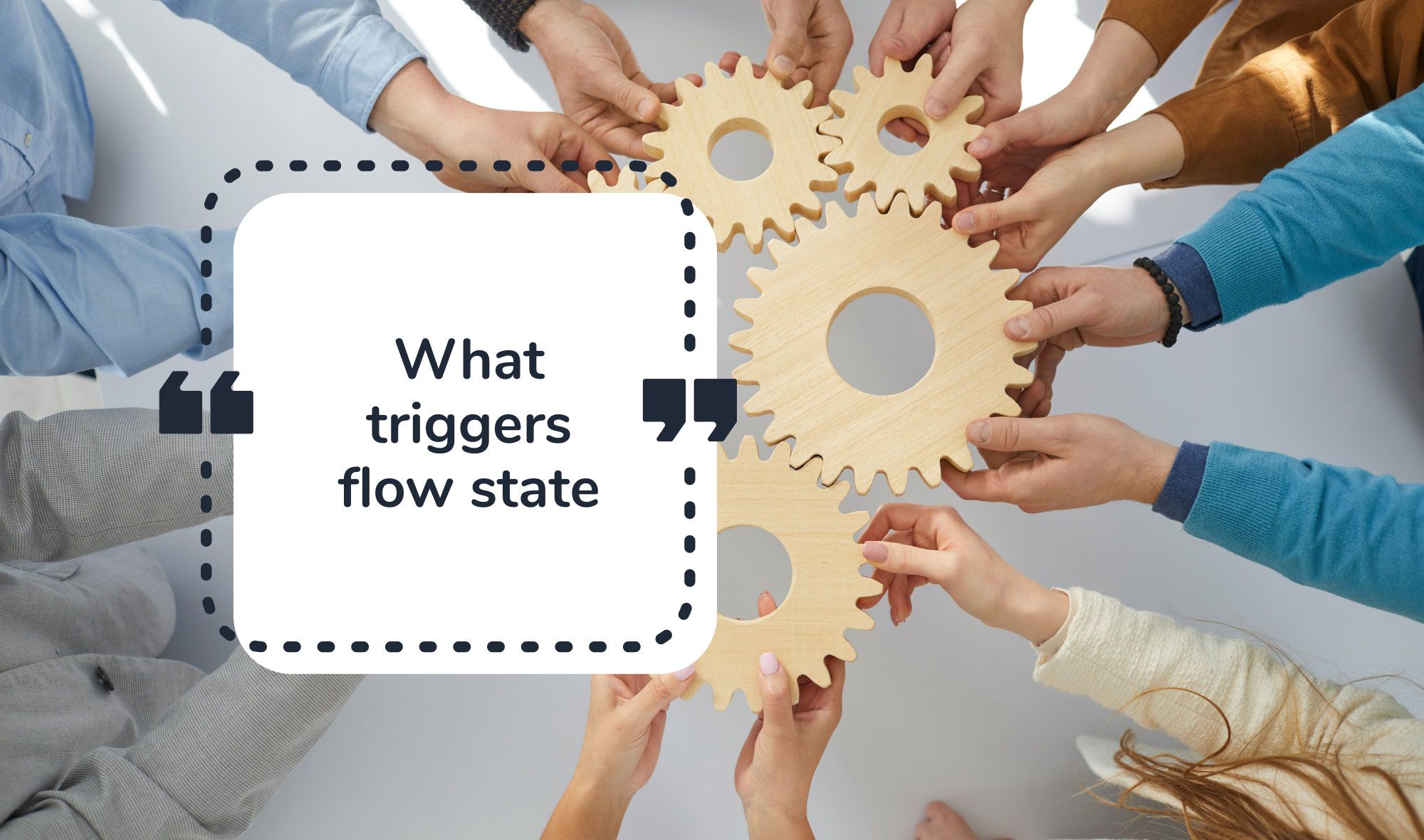
By learning what triggers flow state, organizations can improve employee satisfaction, boost creativity, reduce turnover, and invest in their employees' self-development and performance.
Challenging tasks:
Complex problem-solving tasks that require creative and innovative thinking can trigger a flow state for many people. By exercising the prefrontal cortex and basal ganglia regions of the brain, such experiences foster the optimal state to achieve flow. New and unfamiliar tasks that require individuals to learn and adapt can also lead to increased engagement, motivation, and enjoyment.
Clear goals and feedback:
Did you know that having clear goals and providing immediate feedback on one's performance can help to trigger a flow state? Flow research confirms that in order to facilitate the optimal experience and efficiency in the workplace, setting defined expectations and demonstrating effective communication during onboarding and performance check-ins is key.
Sense of control:
Having control and mastery over the task at hand is one of the key factors that can help trigger a flow state. When individuals feel that they have the skills and abilities necessary to complete a task successfully, they are more likely to feel confident and in control, which can lead to higher levels of motivation, engagement, and enjoyment.
Additionally, having a clearer picture of the task's goals and the steps necessary to complete it can also help foster a sense of control and mastery, which can in turn lead to the experience of flow.
Immersive environment:
Within a focused, distraction-free environment, it makes sense that a person functions at a higher level and is more likely to experience a flow state. Distractions can interrupt the concentration needed for flow, and without an environment that supports being fully immersed in the present moment, it can be challenging to achieve success.
A distraction-free environment, on the other hand, helps create a setting where an individual can direct their full attention toward the task at hand, which can foster a state of deep concentration and engagement.
Intrinsic motivation:
When an individual is motivated by internal desires, such as a genuine interest in the activity or a drive to improve their skills, they are more likely to enter a flow state. This is because they are driven by intrinsic motivation, which is associated with greater enjoyment and satisfaction.
On the other hand, if someone is motivated by external rewards, such as money or recognition, they may feel less invested in the activity and less likely to enter a flow state. By focusing on internal motivations, individuals can increase their chances of experiencing a flow state and the benefits that come with it.
How to identify flow state

Observing employees' level of engagement and immersion in their tasks is one technique to assess flow state. If they are completely concentrated and invested in what they are doing, they may be in a flow state.
Observing changes in time perception is another method to determine flow state. People in a flow state frequently have a confused sense of time, as though time has slowed or passed swiftly.

Looking for evidence of positive effects, such as increased energy, enthusiasm, and enjoyment, is a third technique to identify flow state. People who are in a flow state are frequently extremely driven and feel satisfied and fulfilled from their activity.
These are just some of the techniques used for identifying flow state, and they should be used in conjunction with other methods, such as self-reported assessments and productivity metrics. By monitoring their level of engagement, time perception, and overall effect, employers can gain a better understanding of their employees' flow triggers and take steps to enhance their work environment.
If you are interested in exploring self-reflection further, you can check out our post on 45 Self-Reflection Questions to Nurture Your Mind, Body, and Soul.
Achieve peak performance through flow state training
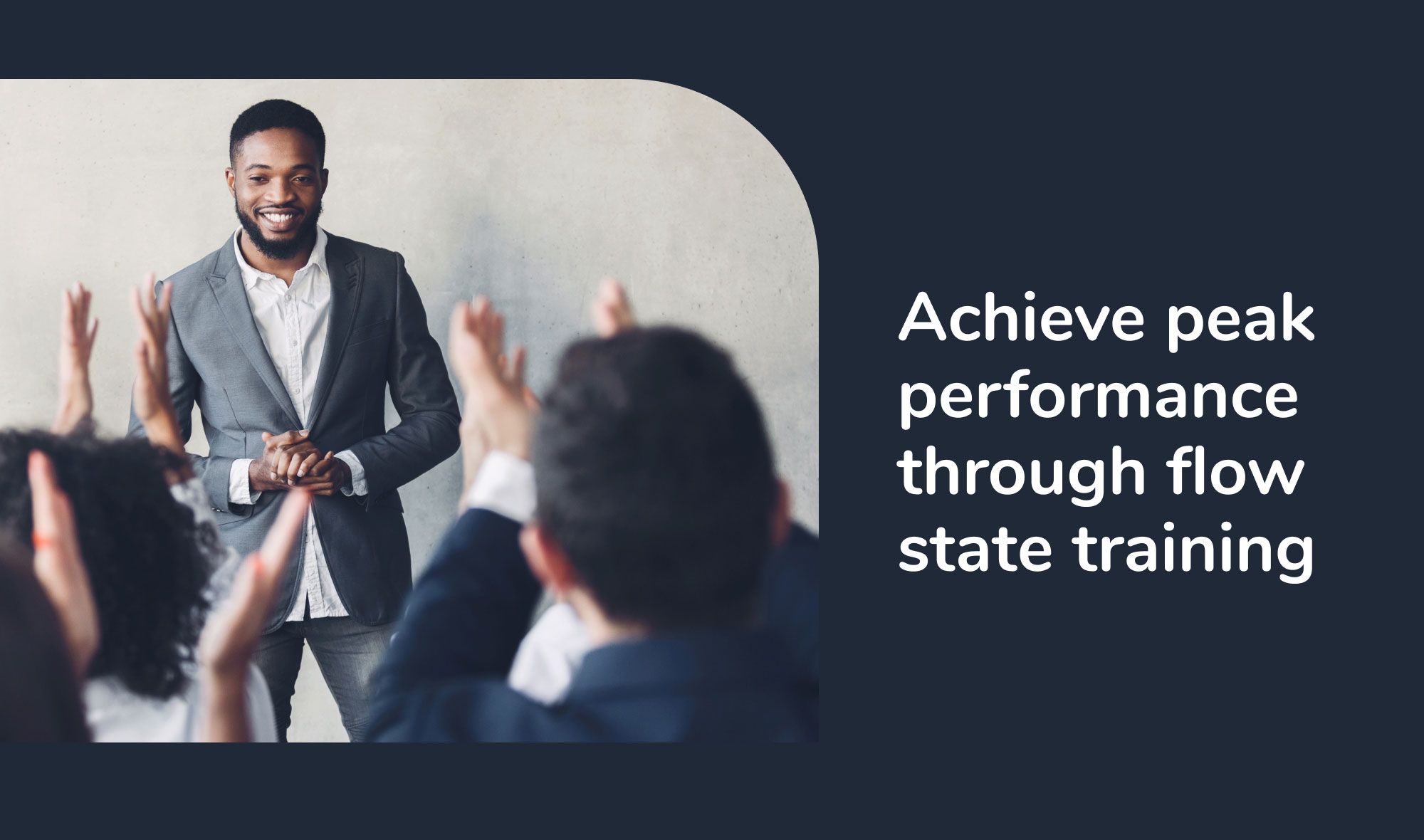
Flow state training is a process of developing and enhancing the ability to enter and maintain the flow state, with the aim of achieving peak performance in all areas of life. It involves learning techniques to increase concentration, attention, and motivation, and aligning one's goals and values with their activities.
For example, athletes can train to enter the flow state for improved focus, heightened awareness, and better reaction time, leading to a higher skill level. Teachers implement flow state training to enhance their student engagement, motivation, and ability to process information, leading to improved academic performance. Individuals can also use flow state training to better their physical and mental health, reduce stress and anxiety, and increase their overall quality of life.
Whether you're a first-time manager facing new challenges or a seasoned leader seeking to raise the bar for your team, here are five tips for getting out of your comfort zone and embracing a state of flow in the workplace.
Also, if you are considering coaching as a way to achieve peak performance, check out Life and career coaching: FAQs for more on the topic.
1. Setting clear goals and intentions

Setting clear goals and intentions helps employees achieve peak performance by providing a roadmap and direction, as well as a means of measuring progress and success. When leaders fail to set expectations upfront or their message is confusing, it can lead to decreased motivation and engagement from their employees, inefficient use of time and resources, and potentially further misunderstandings and conflicts.
If your team struggles to experience flow as a result of poor communication, consider holding regular team meetings to communicate goals and progress. Encourage open dialogue and feedback, and provide resources and support for goal achievement. By establishing specific, attainable, and relevant objectives and effectively communicating the details to your staff, you'll be one step closer to the optimal experience that a state of flow has to offer.
2. Minimizing distractions

According to a recent study, the average worker gets interrupted or switches tasks about every 11 minutes; that's at least five times in one hour! Although the number of interruptions can vary greatly depending on the type of work, the workplace environment, and the employee's role, even one interruption can throw a wrench in the flow cycle. By reducing distractions, teams can achieve a state of flow, where they are fully immersed in their work and perform at their best.
Managers should first develop a real awareness of what is pulling individuals or the entire team away from their main objectives. Consider doing regular check-ins with team members to identify recurring distractions, or conduct an anonymous survey to better understand the level or source of distractions in your office.
If you uncovered that the root of the interruptions is another team member, be sure to quickly set clear guidelines on what is acceptable behavior in the workplace and provide reminders on how to be mindful of others' time and work. Unaddressed personnel issues such as these can contribute to high consequences, including low team morale and higher employee turnover.
To eliminate distractions, many leaders have implemented flexible work hours and remote work options, as work-from-home employees seem to experience fewer interruptions compared to those in a traditional office environment. Additionally, more business owners are changing their approach to meetings and team management. By limiting unnecessary meetings and prioritizing the important ones, without sacrificing the quality of their communication, managers can successfully balance effective leadership and helping their staff find flow.
3. Engaging in deep work

Deep work is a term coined by Cal Newport in his book of the same name. It refers to the ability to focus without distraction on a cognitively demanding task, producing results that are both valuable and rare.
For example, a software developer who spends several hours coding without checking their email or social media is able to produce high-quality code in a short period of time. By creating a supportive environment for deep work, managers can help their employees concentrate, be more productive, and achieve their full potential in life.
Start by explaining the benefits of deep work to your team and encourage them to adopt a method that works for them to increase their productivity and job satisfaction. One of the best ways to model the importance and effectiveness of deep work is to set aside blocks of uninterrupted time on your own calendar and share this with your employees. By setting the example, team members will be more likely to change their own habits and experience more flow for themselves.
4. Practicing mindfulness and meditation
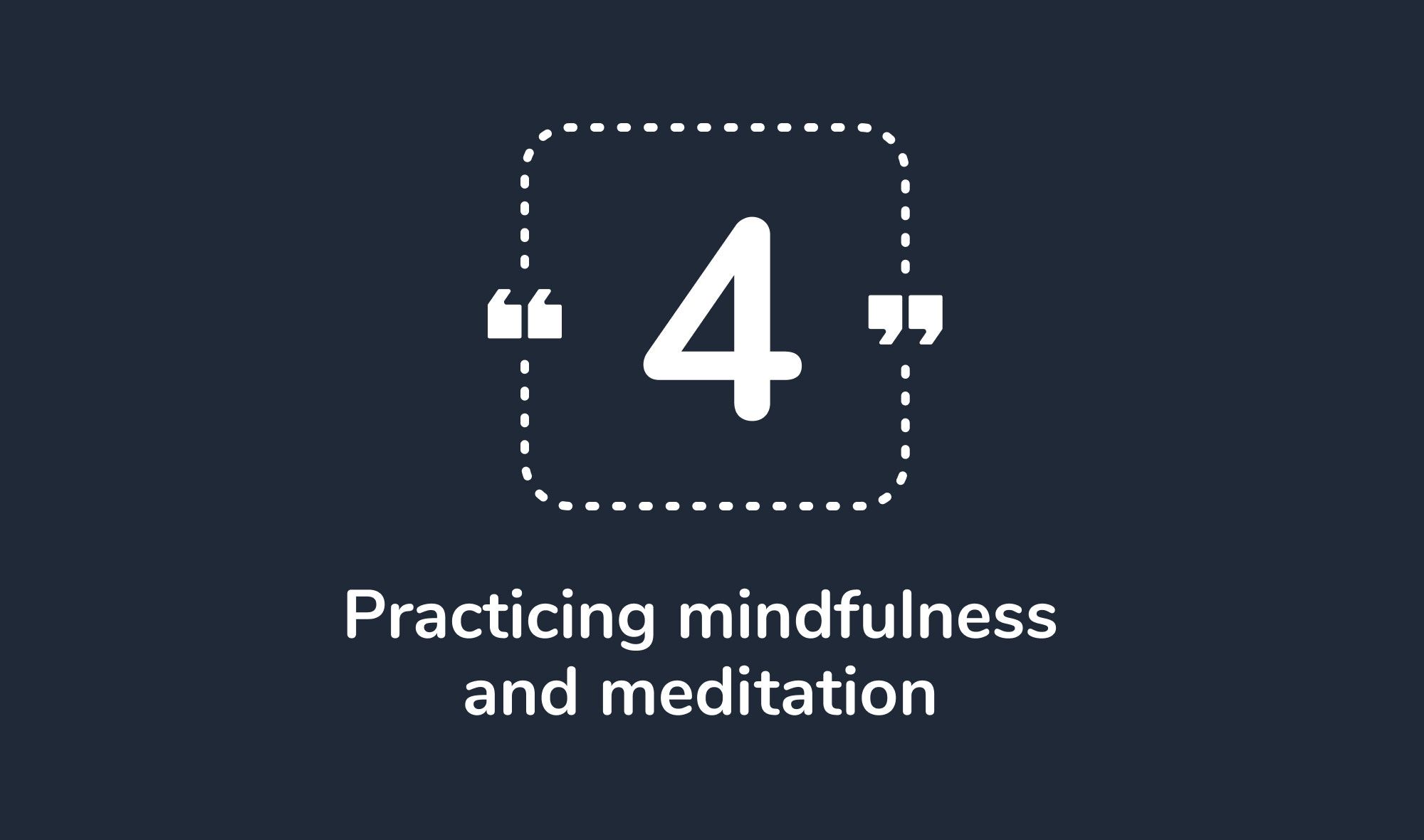
By incorporating mindfulness and meditation into flow state training, leaders can assist team members in cultivating the mental and emotional skills needed to achieve peak performance in their professional and personal life.
A number of techniques, such as breathing exercises and body scans, help to regulate emotions and decrease stress, allowing one to remain calm and focused under pressure. Additionally, the practice of visualization encourages regularly imagining oneself reaching goals and succeeding in specific areas of life, leading to greater self-confidence and motivation.
One company that adopted a deep embodiment of this concept is Google, which set aside rooms for quiet reflection and meditation for their employees. The organization also offers workshops and training on mindfulness and meditation and provides resources like guided meditations on its internal website.
The implementation of mindfulness practices at Google has had a positive impact on the company's business. Employees report increased productivity, improved relationships with colleagues, and reduced stress levels. The company has also noted a decrease in absenteeism and healthcare costs, as well as an overall improvement in employee morale and job satisfaction.
Google's success in incorporating mindfulness practices into the workplace has inspired other companies to follow suit, demonstrating the tangible benefits of incorporating mindfulness into the corporate culture.
5. Incorporating physical activity
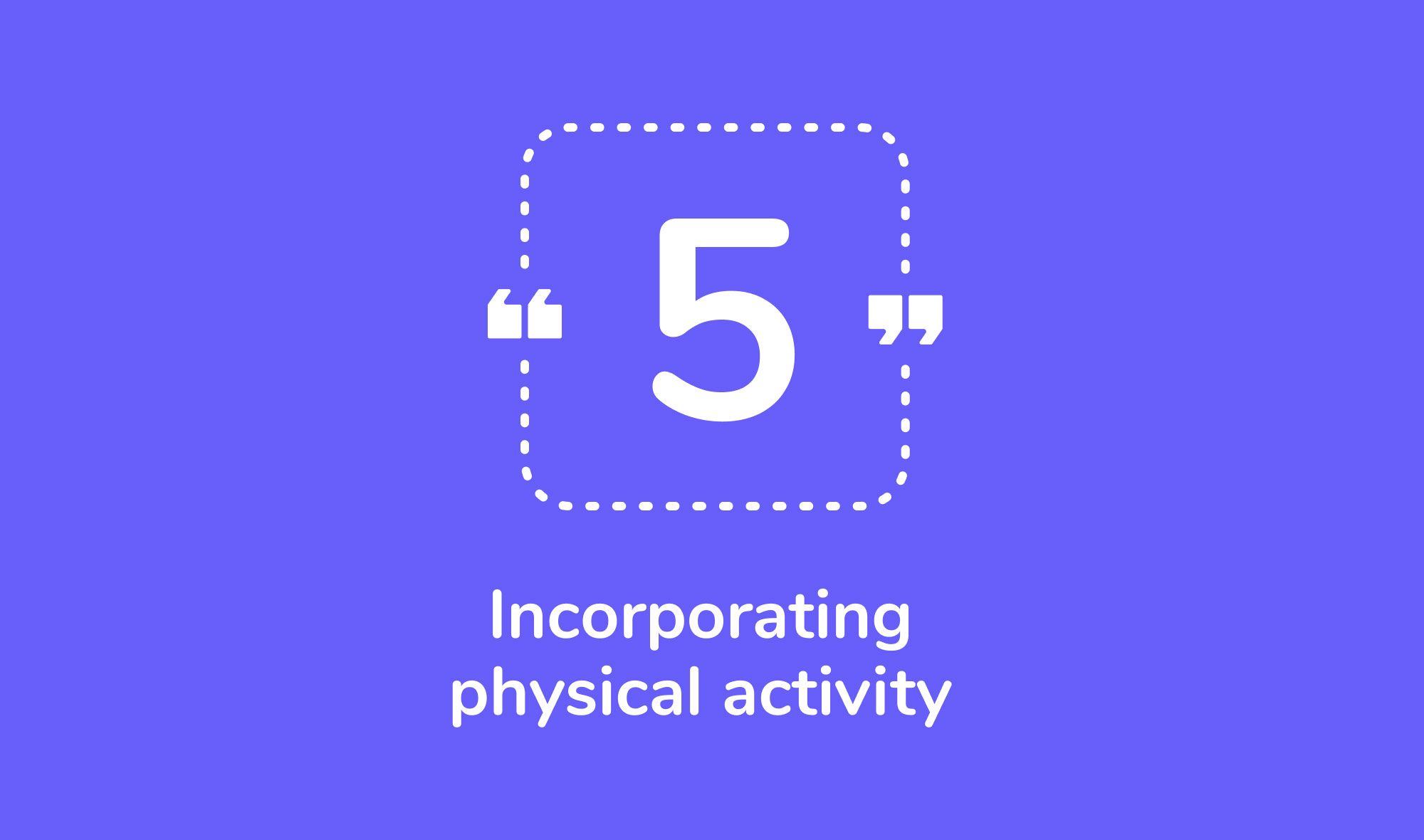
Physical activity can help individuals reach their full potential at work and achieve a flow state more often by boosting energy levels and reducing fatigue, allowing individuals to sustain their attention for longer periods of time. It is also known to enhance cognitive function and mental sharpness, helping individuals make more informed decisions and approach tasks with greater clarity.
Help your co-workers or employees find flow triggers and balance through mindful walks or outdoor activities. Starting a lunchtime yoga group or coordinating stretching breaks throughout the day gets your body moving, helps to quiet and refocus the mind, and might even help you make a new friend at work!
Achieve flow state in everyday life
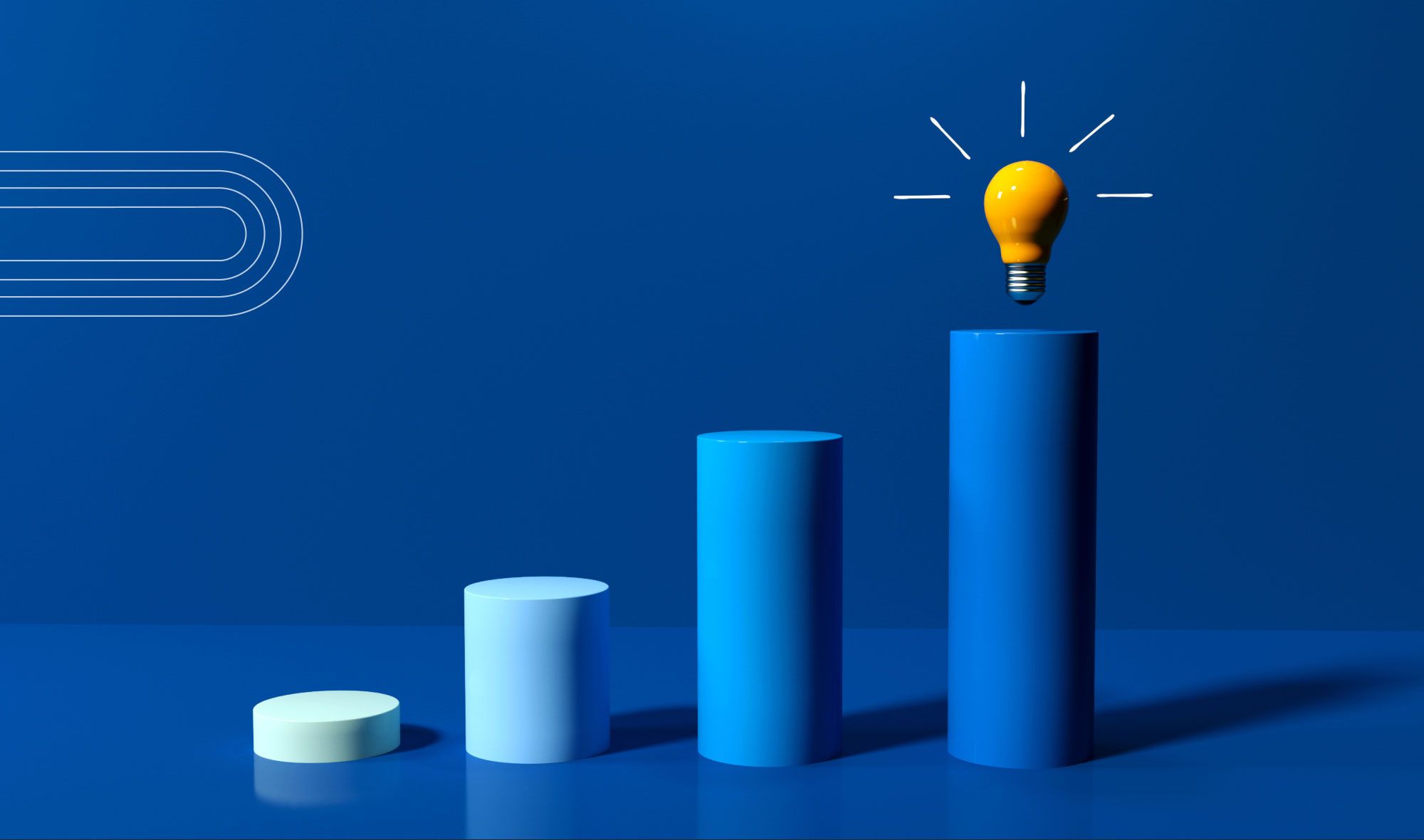
Many people tend to associate flow state with professional life or artistic pursuits, such as playing a musical instrument or performing a sport at a high level. However, a flow state can be experienced in many different everyday activities and can lead to personal growth and wellness.
Some benefits of incorporating flow into every day of the week include improved productivity and concentration, an enhanced feeling of fulfillment and satisfaction, and improved relationships. By incorporating flow state into daily life and finding activities that bring joy and fulfillment, individuals can experience personal growth and development, leading to a more fulfilling and meaningful life.
Identifying flow-conducive activities

To achieve flow daily, it is important to identify activities that bring joy, challenge, and fulfillment and that you can become totally immersed in. This can be anything from a hobby, exercise, creative pursuit, or work task that engages the individual's full attention and concentration.
Scheduling flow state into a daily routine

Once flow-conducive activities have been identified, it is important to schedule time for these activities in the daily routine. A rich environment that facilitates flow triggers begins with being intentional with your time and energy. This can involve setting aside dedicated time blocks for focused work or scheduling time for a favorite hobby or exercise.
Staying aware of personal triggers and barriers
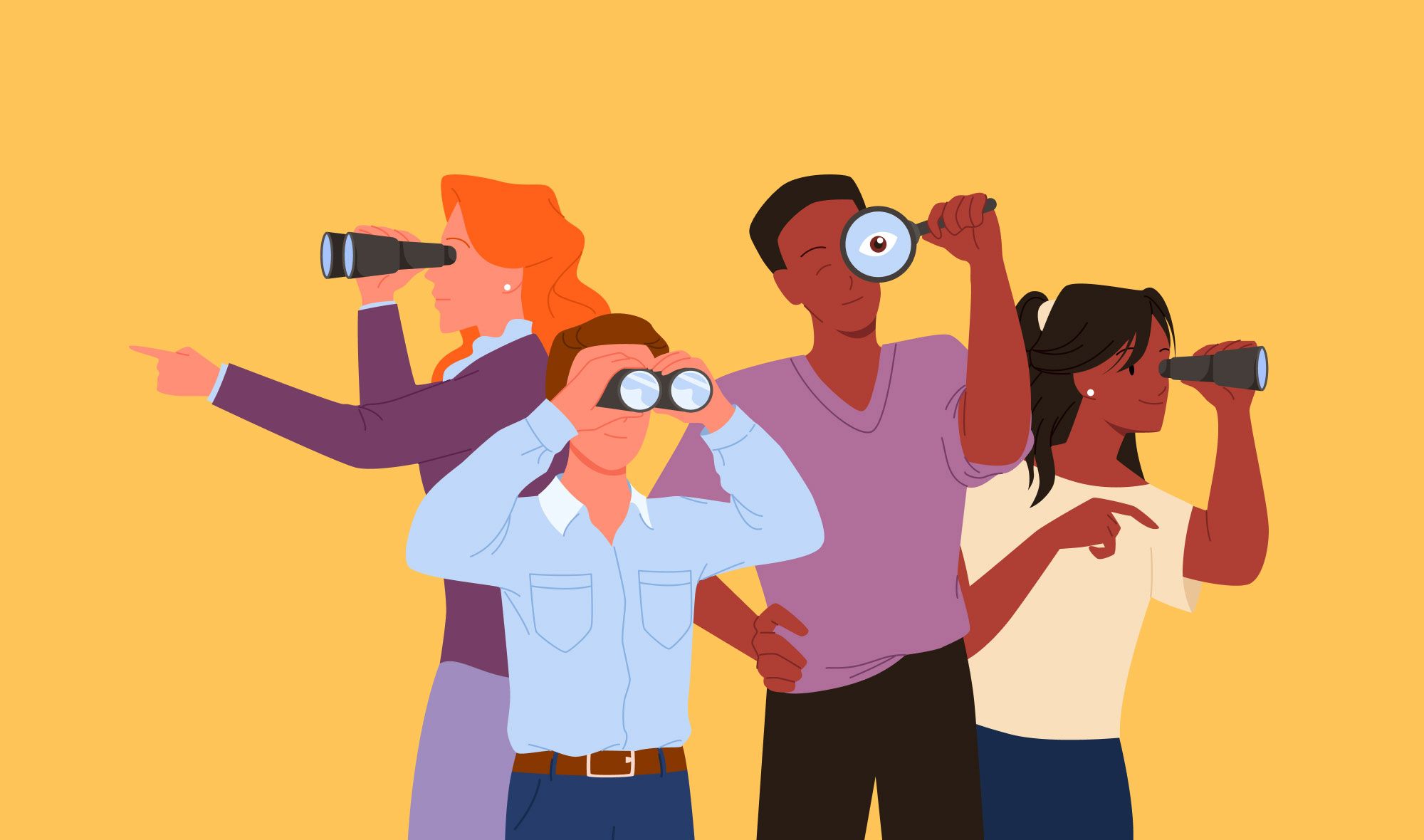
It is important to be aware of the personal triggers and barriers that may interfere with the ability to enter a flow state. This may involve identifying and addressing sources of stress or distractions, setting boundaries around technology use, or making changes to the environment to reduce distractions.
By incorporating these strategies into daily life, individuals can increase the frequency flow occurs and duration of flow state experiences, leading to improved productivity, creativity, and overall well-being. Additionally, it is important to regularly reflect on the flow experiences and make adjustments to the daily routine as needed to find flow state opportunities and optimize them.
Conclusion
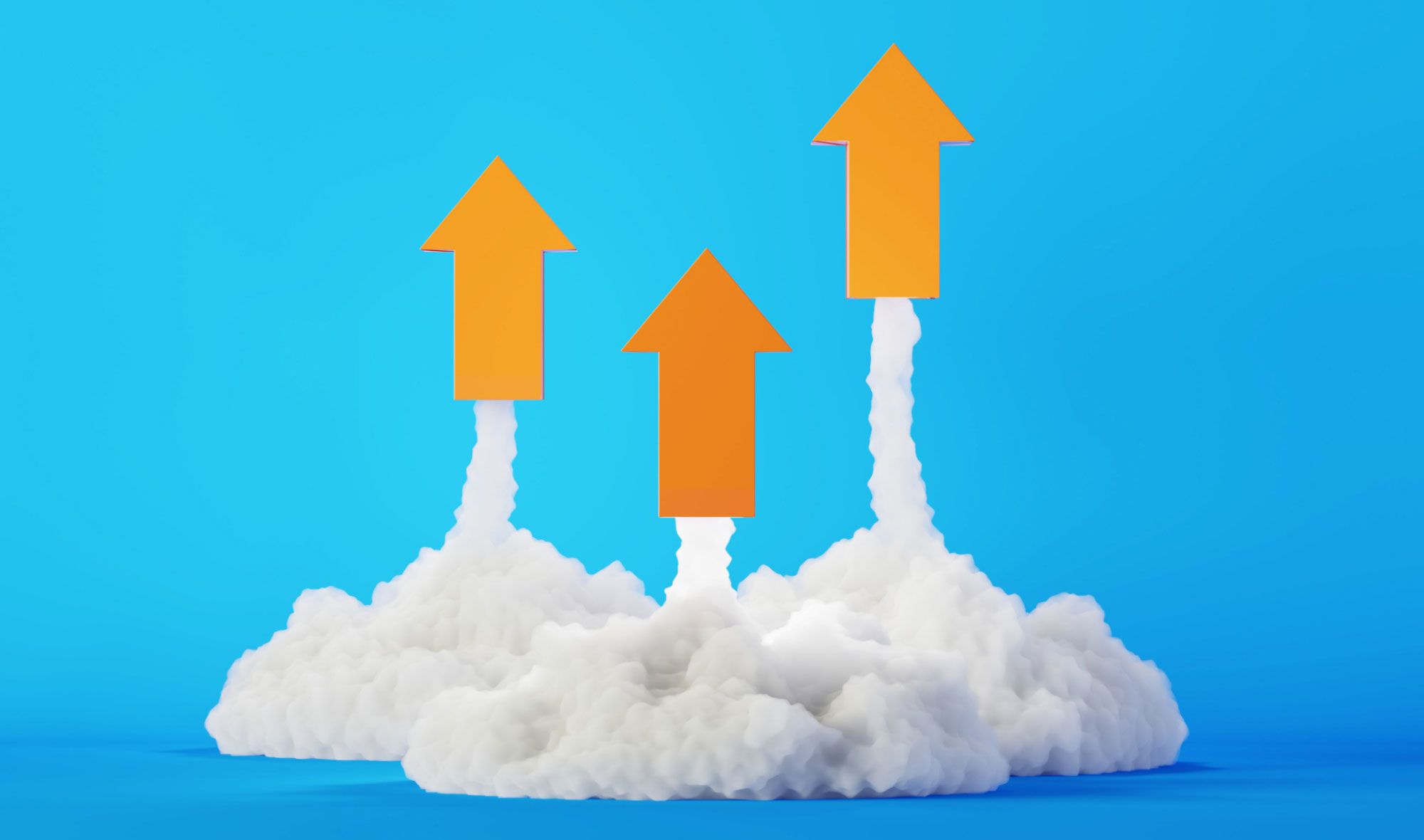
In conclusion, flow state training has been shown to be an effective way of enhancing productivity and creativity across many areas of life. By allowing individuals to fully engage with their tasks and achieve a state of deep concentration, a flow state can lead to improved performance and overall well-being.
Flow states have numerous perks, including increased creativity and problem-solving skills, a greater sense of fulfillment and satisfaction, improved relationships and communication skills, and increased physical and mental well-being.
Both individuals and organizations should be encouraged to incorporate flow state training into their daily routine and workplace. By learning more about flow-conducive activities, scheduling time for flow state experiences in their life, and staying aware of personal triggers and barriers, individuals can increase the frequency and duration of flow state experiences, leading to improved productivity and creativity.
We hope that this blog post has inspired you to explore the power of flow state training and to start incorporating it into every day. If you are interested in learning more about this topic or are seeking support on behalf of your team members or managers, our Zella Life team is here to help.
If you are interested in finding the perfect coach for executives, check out our blog post on How to Choose the Perfect Coach for Executives for valuable insights and guidance.

Read more about: Life Coaching, Executive Coaching
About Julian Lewis
Julian Lewis is a driven and accomplished professional with a passion for driving positive change in the business world. He is the co-founder and COO at Zella Life.
His own experience as a professional of color in a Fortune 500 company led him to discover the limitations for advancement that many professionals like himself face. Determined to reach his full potential, Julian became an established business coach and entrepreneur, committed to supporting others in their pursuit of personal and professional growth.
Today, Julian is a recognized corporate trainer, coach, and leader, known for his ability to leverage real-life experiences and evidence-based methodologies to affect positive change within individuals and organizations. As the leader of Zella Life's coaching division, he is dedicated to empowering individuals and businesses to achieve their full potential.